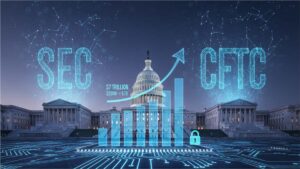TL;DR
- Ripple announces the development of a new stablecoin for digital transactions on XRPL and Ethereum.
- There is speculation about potential support from the U.S. government for the stablecoin, raising expectations.
- David Schwartz, the company’s CTO, argues that they must find a balance between the use of the stablecoin and XRP in cross-border transactions.
Ripple has announced the development of a new stablecoin for the digital transactions market. This new digital asset will be able to conduct operations on both the XRPL and Ethereum networks. It represents a significant advancement in the company’s evolution and its capabilities to offer innovative solutions in the realm of finance.
The announcement has generated great expectations in the market, especially due to the possibility of the U.S. government favoring its use in domestic transactions. According to reports, legal documents related to the case that the company has against the SEC suggest that U.S. authorities may view the use of Ripple’s aforementioned stablecoin favorably, which could represent a tremendous advantage for the widespread adoption of this new form of payment.
The idea is to get people using payment software that *can* settle with XRP. Then there's no reason for them not to settle with XRP where it works best. It would be kind of silly to try to get people to use a solution where it's inferior. 1/2
— David "JoelKatz" Schwartz (@JoelKatz) April 24, 2024
Will Ripple Get Government Approval?
David Schwartz, Ripple’s Chief Technology Officer, believes it is necessary to find a balance between the use of the new stablecoin and XRP in cross-border transactions. According to Schwartz, the choice between one or the other as bridge assets depends on various factors, such as liquidity and the accessibility of asset entry and exit ramps. In this regard, the company is committed to seeking and offering the most efficient and effective solution to meet the needs of its users and comply with applicable regulatory frameworks.
While the announcement of the stablecoin has sparked enthusiasm in the market and among much of the crypto community, some doubts persist about its future performance, especially intertwined with the legal challenges facing Ripple in the United States. However, the company remains optimistic about the opportunities offered by this new digital asset to improve the efficiency and security of transactions in the country.
Ripple continues to evolve and seeks to capture a larger market share. If indeed the government supports the use of its new stablecoin, it would be a tremendous catalyst for its adoption and legitimization. We will be attentive to any developments on the subject.











